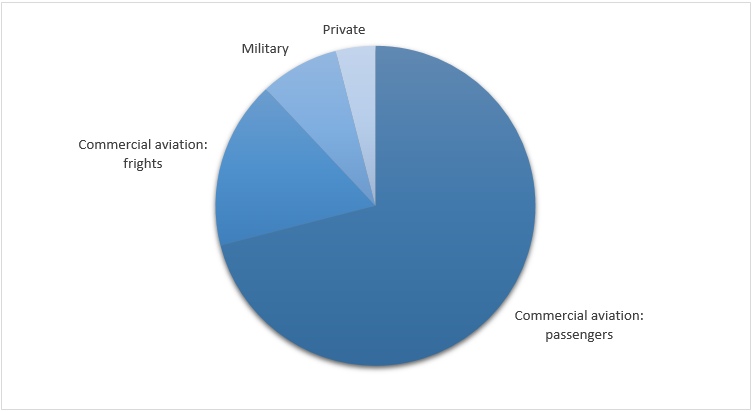Aircraft Actuator Market is Expected a Soaring Growth of 7.5% By 2030, Projects Univdatos Market Insights
- Vikas Kumar
- November 14, 2023
- AUTOMOTIVE, NEWS
- Aircraft Actuator, Aircraft Actuator Market, Aircraft Actuator Market analysis, Aircraft Actuator Market growth, Aircraft Actuator Market share, Aircraft Actuator Market trends
- 0 Comments
Key Highlights of the Report:
- Hydraulic actuators are the most widely used type of aircraft actuator, accounting for the majority of the market share. They are used in a wide range of aircraft systems, including flight control, landing gear, and engine control.
- The commercial aircraft segment is expected to dominate the market during the forecast period, due to the increasing demand for new commercial aircraft and the need for replacement of existing actuators.
- The market is highly competitive, with a few large players dominating the market, such as Parker Hannifin, Hamilton Sundstrand, and Goodrich Corporation. However, there is also a significant number of small and medium-sized players that offer niche products and services.
- The market is expected to be driven by the increasing demand for new aircraft, particularly in emerging markets such as China and India.
- Technological advancements in aircraft actuators, such as the development of lightweight and efficient actuators, are expected to drive market growth.
According to a new report by Univdatos Market Insights, Aircraft Actuator Market was valued at 8.2 billion in 2022 and is expected to grow at a steady rate of around 7.5% in the forecasted period (2023-2030) owing to the increasing demand for devices for maintenance and upgradations in aging aircraft. An aircraft actuator is a mechanical device that is used to control the movement of an aircraft’s control surfaces, such as the ailerons, elevators, and rudder. The actuator converts the input from the pilot’s controls, such as the joystick or yoke, into the necessary movement of the control surface to adjust the aircraft’s attitude and direction. The growing aviation industry is accelerating the demand of the market.
Access Sample PDF Here- https://univdatos.com/get-a-free-sample-form-php/?product_id=47197
The emergence of electric and hybrid-electric propulsion technologies is reshaping the aircraft industry, propelling the demand for robust and high-performance actuators. These advanced propulsion systems require actuators capable of managing increased power levels while ensuring precise control over various aircraft surfaces. These actuators play a vital role in optimizing the benefits of electric propulsion, including enhanced maneuverability, energy efficiency, and reduced emissions. As aircraft designs become more innovative and complex, actuators also need to adapt and integrate seamlessly within distributed propulsion systems and unconventional configurations. The growth of these technologies underscores the pivotal role of specialized actuators in driving the next generation of sustainable and high-performance aircraft.
With the rise in global travel and cargo shipping, commercial aviation plays a vital role in connecting people and goods across the world. This sustained demand for commercial aviation services is driving innovation and investment in aircraft technology, making it a substantial driver of market growth.
Some of the recent developments are:
- In July 2022, Safran SA introduced a new series of electro-hydrostatic actuators (EHA) for the nose landing gear of various aircraft platforms. These EHA are designed to provide precise and efficient control of the landing gear during takeoff, landing, and taxiing. The introduction of these new EHA is expected to enhance the performance and safety of aircraft systems, as well as improve the overall reliability and efficiency of aircraft operations.
- In July 2022, Parker Aerospace announced a partnership aimed at advancing the development of electric flight. As part of this partnership, Aviation Aircraft has contracted Parker Aerospace to develop six technology system packages for Alice, an innovative all-electric commuter aircraft. The technology system packages will include electromechanical actuators, electronic control units, and position sensors, among other components. This collaboration is expected to contribute to the development of more efficient and environmentally friendly aircraft systems, and to support the growth of the electric aviation industry.
- In November 2022, China Aviation Supplies (CASC) signed a bulk purchasing agreement worth USD 17 billion for the purchase of 140 Airbus jets. The agreement included CASC’s previously announced orders for these aircraft. This deal is expected to further strengthen the relationship between Airbus and CASC, and to support the growth of the aviation industry in China.
- In July 2022, Airbus announced that it had signed multiple aircraft orders with four major Chinese airlines – Air China, China Eastern, China Southern, and Shenzhen Airlines – for a total of 292 A320 family aircraft. This significant order is a clear indication of the strong recovery momentum in the Chinese aviation market, and highlights the continued demand for Airbus’s aircraft in this region. The order is also expected to support the growth and development of these airlines, and to contribute to the overall health and sustainability of the aviation industry in China.
Conclusion
The aircraft actuator market is a rapidly growing and highly competitive industry, driven by the increasing demand for advanced aircraft systems and the need for more efficient and reliable aircraft components. With advancements in technology and the increasing focus on sustainability, there are many opportunities for growth and innovation in the aircraft actuator market. Some of the key trends and developments in the market include the increasing use of electric actuators, the development of new materials and technologies, and the adoption of advanced control systems. As the aviation industry continues to evolve, it is likely that the demand for aircraft actuators will continue to grow, providing numerous opportunities for companies and entrepreneurs in this field.


